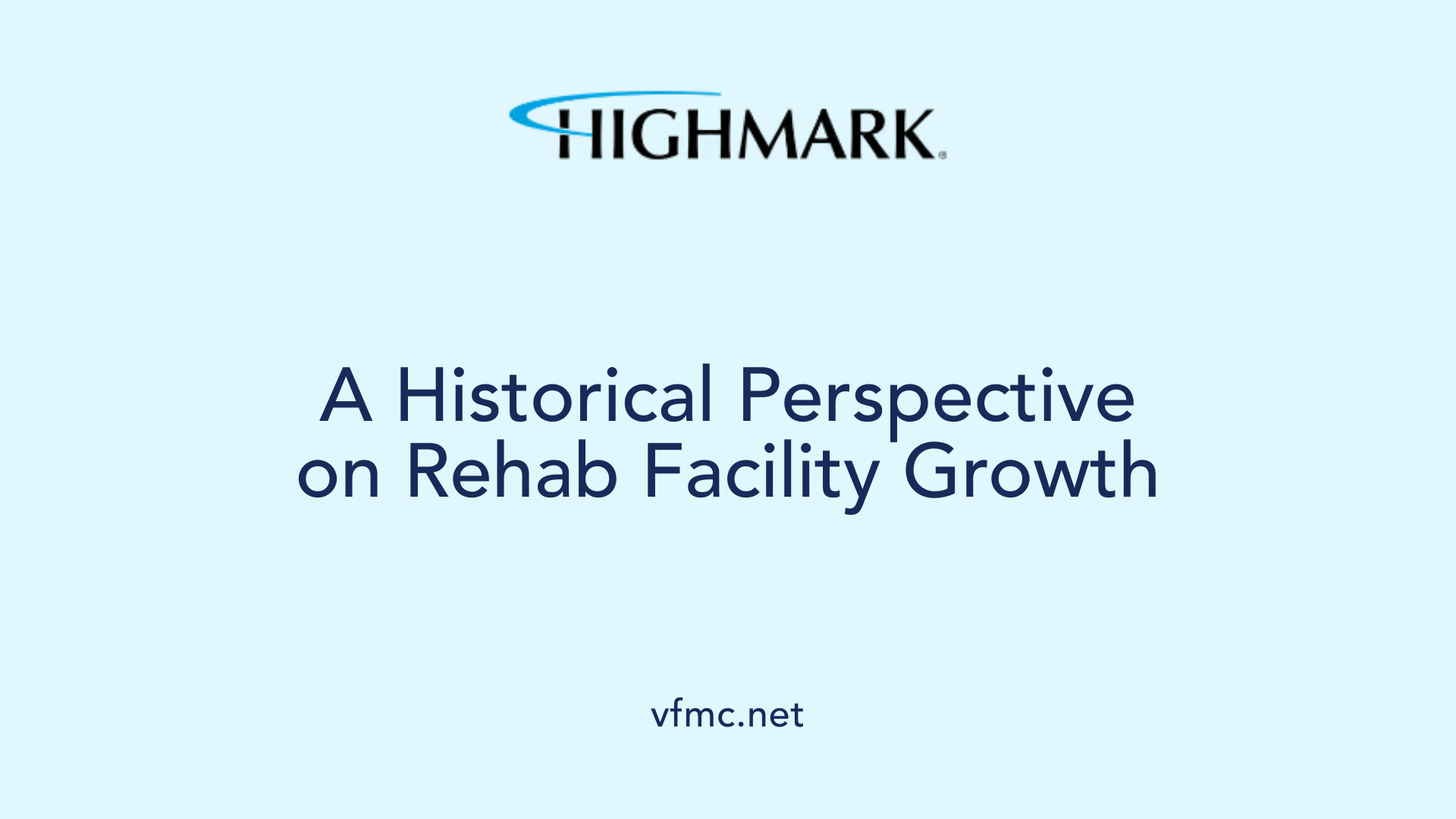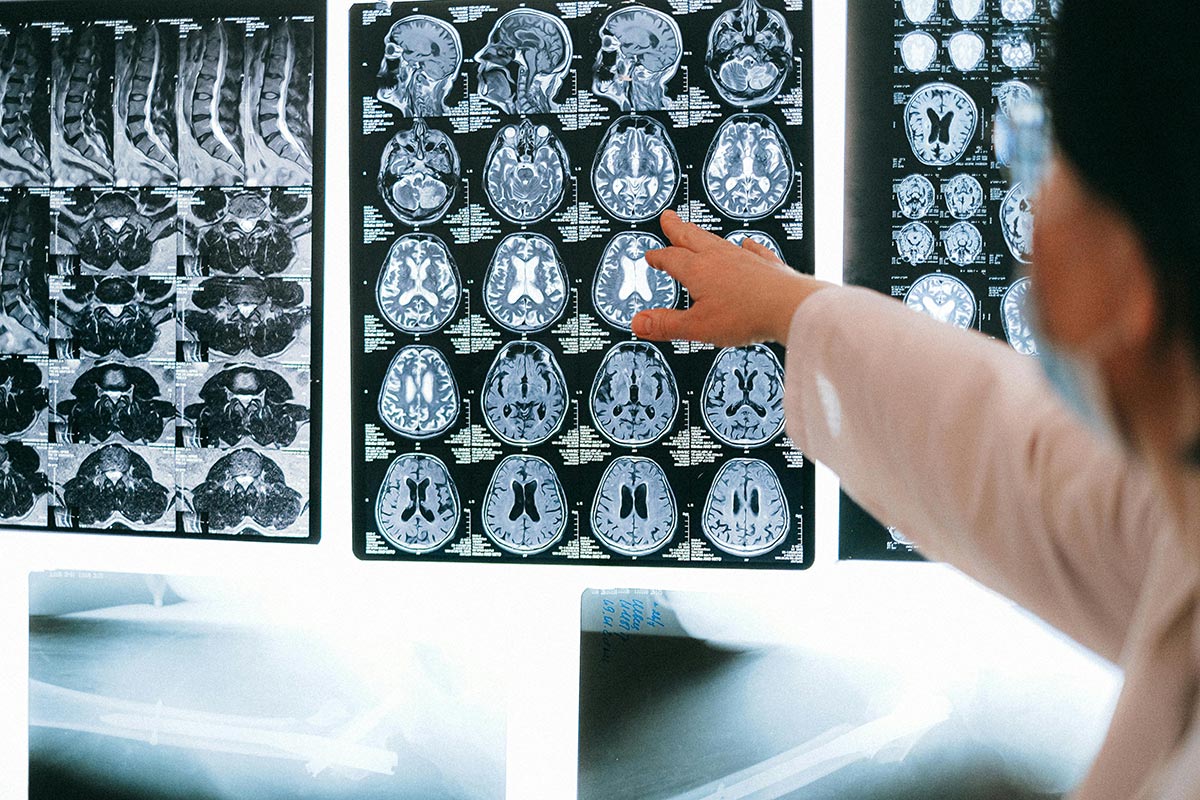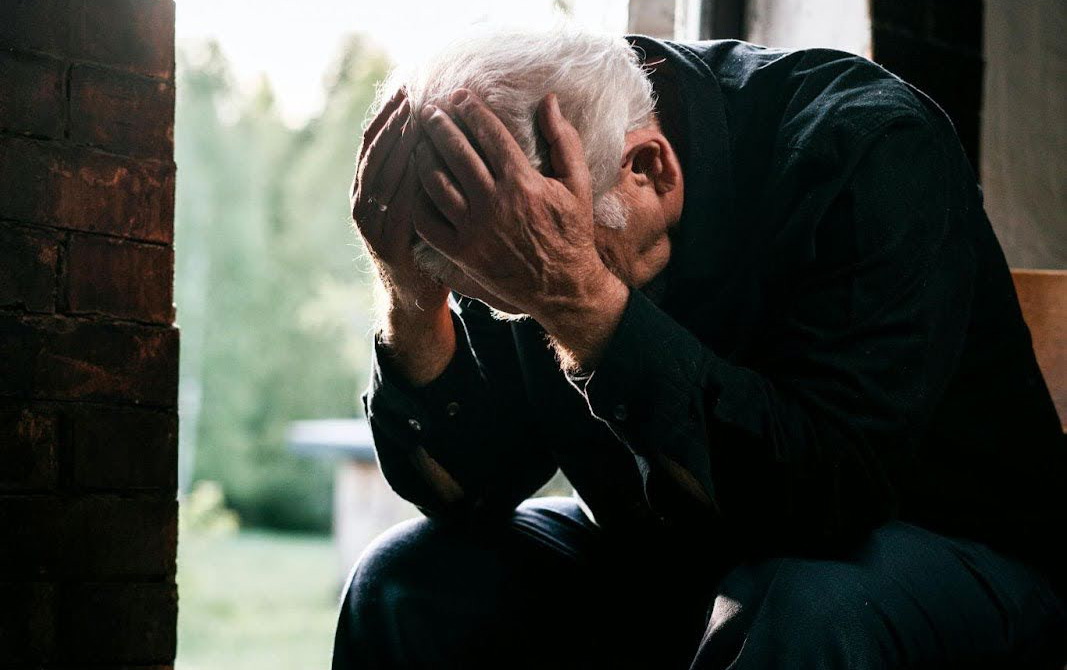
Understanding the Scope of Rehab Centers in America
America's landscape of addiction treatment facilities is vast and ever-evolving, reflecting both the ongoing challenges of substance abuse and the healthcare system's response. With an increase in the number of centers over the years, these facilities play a critical role in addressing addiction and supporting recovery across the country.
Current Figures of Addiction Treatment Facilities

How many rehabilitation centers are there in the U.S. for addiction treatment?
As of 2023, there are approximately 28,900 facilities in the United States offering various forms of addiction treatment. This includes inpatient and outpatient options, enabling a diverse array of services to cater to individual needs. Among these, residential treatment centers (RTCs) stand out as live-in healthcare facilities designed to address substance use disorders, mental health issues, and other behavioral problems.
Comparative increase from previous years
The number of substance abuse treatment facilities has seen a notable upward trend in recent years. In 2022, there were 17,353 facilities, marking an increase from the 17,561 facilities reported in 2023. To put this in perspective, there were 14,828 facilities in 2019, showing a consistent growth from 11,533 facilities in 2002. This steady rise underscores the growing recognition of the importance of addiction treatment services amid the ongoing substance abuse epidemic.
Role in addressing addiction
These treatment facilities play a pivotal role in confronting the substance abuse crisis across the U.S. By providing accessible and varied treatment options, they support millions of individuals each year. For instance, over 1.46 million patients enroll in substance abuse clinics annually, emphasizing their significance in the healthcare landscape. While RTCs offer valuable support, they have faced challenges and criticisms related to the quality of care in some settings. Nonetheless, their imperative role in helping individuals navigate the complexities of addiction recovery remains clear.
Historical Growth Trends in Rehab Facilities

Growth from 2003 to 2023
The landscape of substance abuse treatment facilities in the United States has seen a marked increase over the years. Starting from 13,720 facilities in 2003, the number surged to 17,561 by 2023. Notably, the increase was significant from 11,533 facilities in 2002 to 14,828 by 2019 and reaching 17,353 in 2022.
Factors contributing to increase in centers
Several factors have contributed to this growth. The escalating substance abuse epidemic, particularly the opioid crisis, has spurred a greater acknowledgment of the need for specialized treatment centers. In 2022, 29,113 facilities known to SAMHSA reflected an increased focus on mental health and substance use treatment. Financially, the addiction rehab industry is substantial, generating around $42 billion annually.
Impact of historical trends on treatment options
Historically, this growth has expanded the types of services offered. As of 2019, a significant percentage of these facilities (95.1%) provided outpatient services, while numerous facilities also offered inpatient treatment. This increased availability of diverse treatment options ensures those in need have a better chance of accessing recovery resources.
Understanding Substance Use and Mental Health Treatment Facilities

Total Number of Facilities
In 2023, there were 17,561 substance use treatment facilities in the United States, marking an increase from 17,353 in 2022. This trend reflects a growing acknowledgment of the need for addiction treatment over the years. From 2003 to 2023, the number of facilities has steadily risen from 13,720 in 2003, illustrating an expanding framework for support and services.
Overlap Between SU and MH Facilities
Out of a total of 29,113 treatment facilities that SAMHSA identified, 25,148 of these were eligible for the National Substance Use and Mental Health Services Survey (N-SUMHSS). This indicates significant overlap between substance use (SU) and mental health (MH) treatment services, showcasing the critical interrelation between these two areas. Acknowledging that many individuals face dual challenges can enhance treatment approaches.
Importance of Comprehensive Care
The diversity of available facilities—including outpatient, residential only, and a combination of services—plays a crucial role in addressing individualized care. With 95.1% of facilities providing outpatient services, they cater to a broad spectrum of needs, ensuring that treatment is accessible and adaptable. The rising number of facilities not only signifies efforts to combat the substance abuse epidemic but also underscores the importance of offering various treatment pathways to facilitate recovery.
Types and Specializations of Addiction Treatment Centers

Differentiation of facility types
In the United States, the substance abuse treatment landscape is diverse, comprising various facility types designed to meet different needs. The National Directory of Drug and Alcohol Use Treatment Facilities highlights a wide range of options, including:
- Outpatient Facilities: These allow clients to remain at home during treatment while attending scheduled sessions.
- Residential Facilities: Clients live at the facility during treatment, offering a more immersive environment.
- Mixed Facilities: Many centers provide both outpatient and residential services, catering to varied client needs.
As of 2023, there were approximately 17,561 substance abuse treatment facilities available across the country.
Outpatient vs. Residential Treatment
Both outpatient and residential treatment options serve specific purposes in addiction recovery:
- Outpatient Services: Approximately 95.1% of addiction treatment facilities offer outpatient services, which are often more flexible and less costly—averaging around $1,583 per year.
- Residential Programs: These can be considerably more expensive, ranging from $10,000 to $30,000 for a 30-day stay, providing intensive support in a controlled environment.
The Role of OTPs
Opioid Treatment Programs (OTPs) specifically focus on medication-assisted treatment for opioid dependence. As of 2019, there were 2,622 OTPs in the U.S. This increase from 1,400 in 2000 highlights the critical need to address the surging opioid crisis. OTPs are crucial in providing tailored treatment plans that balance medication with counseling, thereby enhancing recovery outcomes.
Insights from the National Survey of Substance Abuse Treatment Services
Purpose and findings of N-SSATS
The National Survey of Substance Abuse Treatment Services (N-SSATS) is an annual census that provides essential insights into public and private substance abuse treatment facilities across the United States. This survey helps assess the extent of treatment services available, targeting both operational and client-related statistics. Recent findings from the 2023 survey confirmed that there were 17,561 specialized substance abuse treatment facilities, highlighting a continuous upward trajectory from previous years.
Data on facility characteristics
N-SSATS not only identifies the number of treatment facilities but also catalogs their characteristics. For instance, it has recorded various operational types, such as outpatient-only, residential-only, and those providing a blend of both services. In fact, out of 17,561 facilities, a significant portion caters to specific therapy formats, marking a diverse spectrum of options available for users.
Usage in monitoring trends and resources
The N-SSATS stands as a trusted resource in monitoring industry trends, forecasting treatment needs, and analyzing the diversity of services offered. This ongoing evaluation assists policymakers and healthcare providers in effectively addressing gaps in treatment availability. With approximately 1.46 million patients enrolling annually, such data underscores the growing need for diverse and accessible substance use treatment options across the country.
Comparing Public and Private Treatment Options
Number of Public vs. Private Facilities
In the United States, treatment facilities are a mix of public and private entities. As of 2023, there are approximately 17,561 substance abuse treatment facilities, with a majority being private. Public facilities often provide essential services to underserved populations and are funded by governmental agencies.
Differences in Services Offered
Public facilities typically offer a range of services at low or no cost, making them accessible to those with limited financial resources. In contrast, private facilities may offer more specialized services, such as luxury accommodations or tailored, focused treatment programs. However, they generally charge higher fees.
Significance in Providing Care
The increasing number of both public and private treatment facilities signifies a growing recognition of addiction issues. Public facilities play a crucial role in ensuring that the most vulnerable populations receive care, while private facilities contribute by providing a variety of specialized treatment options. Together, they form a comprehensive network that enhances accessibility and effectiveness in addressing substance abuse across the nation.
Free Treatment and Accessibility
Number of facilities offering free care
In the United States, there are currently 443 facilities providing free treatment for all clients seeking help with substance use disorders. This option is critical for individuals who may not have the financial means to afford treatment but require assistance for their addiction issues.
Importance for underserved populations
These facilities play a vital role in enhancing accessibility for underserved populations, offering crucial resources that promote recovery and reintegration into society. Free treatment options ensure that those who are economically disadvantaged can still access necessary care, ultimately helping to reduce the negative societal impacts of addiction.
Challenges faced by free services
Despite their importance, facilities that offer free services often face funding challenges. Many rely on government grants and donations, which can fluctuate, impacting their ability to sustain operations and maintain quality services. This unpredictability can lead to long waiting lists and a resource strain, limiting access to timely treatment for vulnerable individuals.
Understanding the Success Rates of Rehabilitation Programs
What is the success rate of rehab programs in the U.S.?
The success rate of rehabilitation programs in the United States can vary significantly based on a multitude of factors. According to the Substance Abuse and Mental Health Services Administration (SAMHSA), around 68% of individuals who complete detox programs report achieving successful treatment outcomes. This statistic serves as a noteworthy benchmark for the effectiveness of detoxification processes within substance abuse treatment.
A broader perspective shows that approximately 72.2% of adults experiencing substance use problems while participating in rehab consider themselves either in recovery or have successfully recovered. Despite these encouraging figures, it is crucial to highlight the challenges many face. The relapse rates for drug addiction remain notably high, averaging between 40% and 60%. This statistic underscores the complexity and difficulty of sustaining recovery after treatment.
What factors influence success rates?
Several factors contribute to the success of rehab programs, including:
- Individual Circumstances: Personal history, motivation, and the severity of addiction can all impact recovery.
- Treatment Methods: Different modalities, such as cognitive behavioral therapy or medication-assisted treatment, can lead to varying outcomes.
- Ongoing Support: Continued support from family, friends, and recovery groups significantly enhances the chances of long-term sobriety.
By understanding these dynamics, individuals seeking treatment can better assess their options and choose programs most likely to meet their unique needs.
Economic Impact of the Rehab Industry

Financial Significance of the Industry
The addiction rehabilitation industry is a substantial sector within the U.S. healthcare system, generating approximately $42 billion annually. This economic footprint underscores the critical role that treatment facilities play in addressing substance use disorders through job creation, healthcare provision, and community support.
Economic Benefits of Treatment
Investing in addiction treatment yields significant economic advantages. With 1.46 million patients enrolling in substance abuse clinics each year, the industry not only provides necessary services but also stimulates local economies. Effective treatment can lead to increased productivity and reduced healthcare costs over time, benefiting both individuals and society.
Cost Versus Social Impact
The average cost of substance abuse treatment is roughly $1,583 per year, contrasting sharply with the societal cost of addiction, which averages about $11,487 per person annually. This disparity emphasizes the long-term economic benefits of investing in treatment rather than covering the extensive social costs associated with untreated addiction.
The Role of Residential Treatment Centers (RTCs)
Utility of RTCs in treatment
Residential treatment centers (RTCs) play an essential role in the landscape of substance abuse treatment in the United States. They provide a structured environment for individuals facing addiction, allowing for intensive therapy and medical support. With 17,561 substance abuse treatment facilities documented in 2023, a significant portion is comprised of RTCs that cater to those requiring round-the-clock care and a more engaged approach in addressing complex addiction issues.
Community and family involvement
Involving the community and family members in treatment processes has proven beneficial in RTCs. Programs often encourage family therapy sessions, which enhance support systems for recovering individuals. This collective approach not only fosters a sense of belonging and accountability but also helps address any underlying issues within family dynamics that may contribute to substance use.
Challenges faced by RTCs
Despite their importance, RTCs encounter several challenges. Limited funding can affect the quality and accessibility of resources, creating barriers for those seeking help. Additionally, staffing shortages and high operational costs can pose significant hurdles, potentially impacting the quality of care available. As the substance use crisis continues, addressing these challenges becomes crucial to sustaining the effectiveness and reach of RTCs.
Evolving Challenges and Future Prospects
Challenges in addiction treatment landscape
Addiction treatment facilities in the U.S. have witnessed significant growth, rising to 17,561 in 2023 from 14,558 in 2019. Despite this increase, challenges persist. Accessibility remains a barrier, particularly for marginalized communities. Moreover, facility capacity often falls short against the demand, with approximately 1.46 million patients enrolling in treatment annually. The complexity of substance abuse issues, often combined with mental health disorders, compounds these challenges.
Future of rehab facilities
Looking ahead, the focus is likely to shift towards integrating more comprehensive care within rehab facilities. This includes enhancing services for co-occurring disorders, which affect a significant portion of patients. Expanding telehealth options will also play a crucial role in making treatment more accessible to those unable to visit facilities in person.
Anticipated trends and developments
Among anticipated trends, the rise in outpatient services is notable, as 95.1% of facilities currently offer them. This reflects a growing preference for less intensive care models. Additionally, the economic impact of addiction treatment emphasizes the industry's significance; it's projected to generate around $42 billion annually. As the landscape evolves, continued investment in facility expansion and technological upgrades will be essential to meet future demands.
Utilizing National Resources for Rehab Facility Information
Importance of directories and surveys
In the complex landscape of addiction treatment, resources like the National Directory of Drug and Alcohol Abuse Treatment Facilities and the National Survey of Substance Abuse Treatment Services (N-SSATS) play a pivotal role. These directories compile crucial data about available rehab facilities, ensuring individuals and families can locate suitable services efficiently.
How to leverage available resources
To find help, potential patients or their families should utilize the National Directory, which lists treatment facilities across the U.S. This directory is a trusted source as it features licensed and certified providers verified by state substance use agencies. With 17,561 facilities reported in 2023, options span outpatient clinics, residential treatment centers, and specialized opioid treatment programs.
Role in shaping public knowledge
These resources not only help individuals access treatment but also inform public awareness about substance use and the services available. The data gathered represents the growing commitment to addressing the addiction crisis, highlighting the progressive increase in facilities and treatment options available nationwide.
Ongoing Commitment to Combating Addiction
The expanding network of addiction treatment facilities across the United States signifies a dedicated commitment to addressing substance abuse and supporting recovery. With a wide array of treatment options and an ongoing refinement of services, the nation continues to strive toward greater accessibility and effectiveness in the battle against addiction. Enhanced public awareness and engagement remain critical in ensuring that individuals in need find the right paths to healing and recovery.
References
- Number of substance abuse treatment facilities in the U.S. 2003-2023
- How Many Addiction Treatment Centers Are In The U.S? - Townsend
- National Survey of Substance Abuse Treatment Services (N-SSATS)
- Average Cost of Drug Rehab [2023]: by Type, State & More
- How Many Addiction Treatment Centers Are There in the U.S.?
- How Many Rehab Centers are in the US? - Clear Steps Recovery
- United States Addiction Rehab Industry Report 2020: SAMHSA
- 2023 National Directory of Drug and Alcohol Use Treatment Facilities
.svg)





